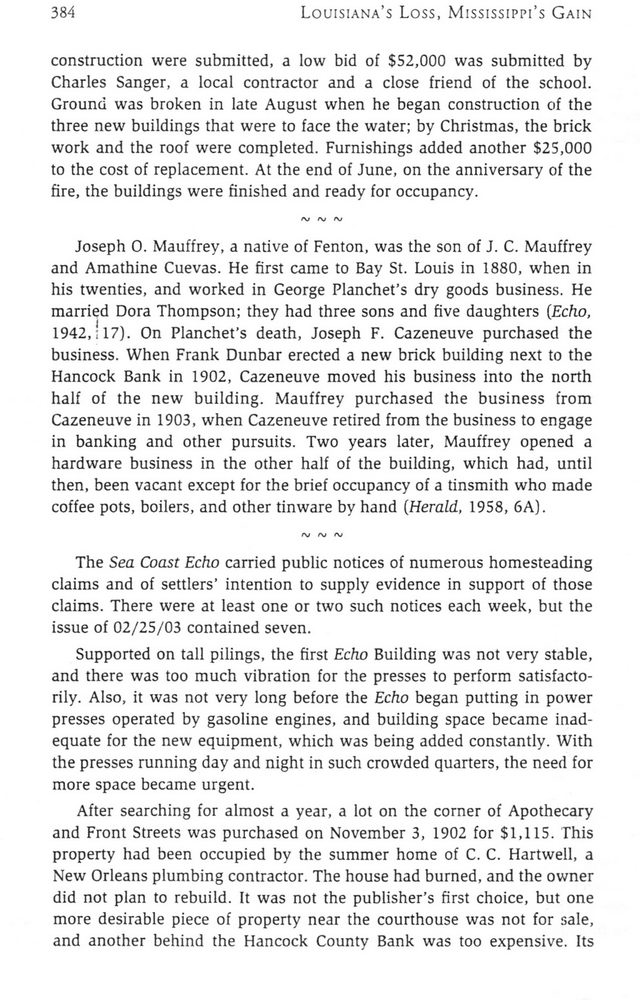This text was obtained via automated optical character recognition.
It has not been edited and may therefore contain several errors.
384
Louisiana?s Loss, Mississippi?s Gain
construction were submitted, a low bid of $52,000 was submitted by Charles Sanger, a local contractor and a close friend of the school. Ground was broken in late August when he began construction of the three new buildings that were to face the water; by Christmas, the brick work and the roof were completed. Furnishings added another $25,000 to the cost of replacement. At the end of June, on the anniversary of the fire, the buildings were finished and ready for occupancy.
i\j r\j i\j
Joseph O. Mauffrey, a native of Fenton, was the son of J. C. Mauffrey and Amathine Cuevas. He first came to Bay St. Louis in 1880, when in his twenties, and worked in George Planchet?s dry goods business. He married Dora Thompson; they had three sons and five daughters {Echo, 1942,; 17). On Planchet?s death, Joseph F. Cazeneuve purchased the business. When Frank Dunbar erected a new brick building next to the Hancock Bank in 1902, Cazeneuve moved his business into the north half of the new building. Mauffrey purchased the business from Cazeneuve in 1903, when Cazeneuve retired from the business to engage in banking and other pursuits. Two years later, Mauffrey opened a hardware business in the other half of the building, which had, until then, been vacant except for the brief occupancy of a tinsmith who made coffee pots, boilers, and other tinware by hand (Herald, 1958, 6A).
The Sea Coast Echo carried public notices of numerous homesteading claims and of settlers? intention to supply evidence in support of those claims. There were at least one or two such notices each week, but the issue of 02/25/03 contained seven.
Supported on tall pilings, the first Echo Building was not very stable, and there was too much vibration for the presses to perform satisfactorily. Also, it was not very long before the Echo began putting in power presses operated by gasoline engines, and building space became inadequate for the new equipment, which was being added constantly. With the presses running day and night in such crowded quarters, the need for more space became urgent.
After searching for almost a year, a lot on the corner of Apothecary and Front Streets was purchased on November 3, 1902 for $1,115. This property had been occupied by the summer home of C. C. Hartwell, a New Orleans plumbing contractor. The house had burned, and the owner did not plan to rebuild. It was not the publisher?s first choice, but one more desirable piece of property near the courthouse was not for sale, and another behind the Hancock County Bank was too expensive. Its

Gardebled Louisiana's-Loss-Mississippi's-Gain-page-384